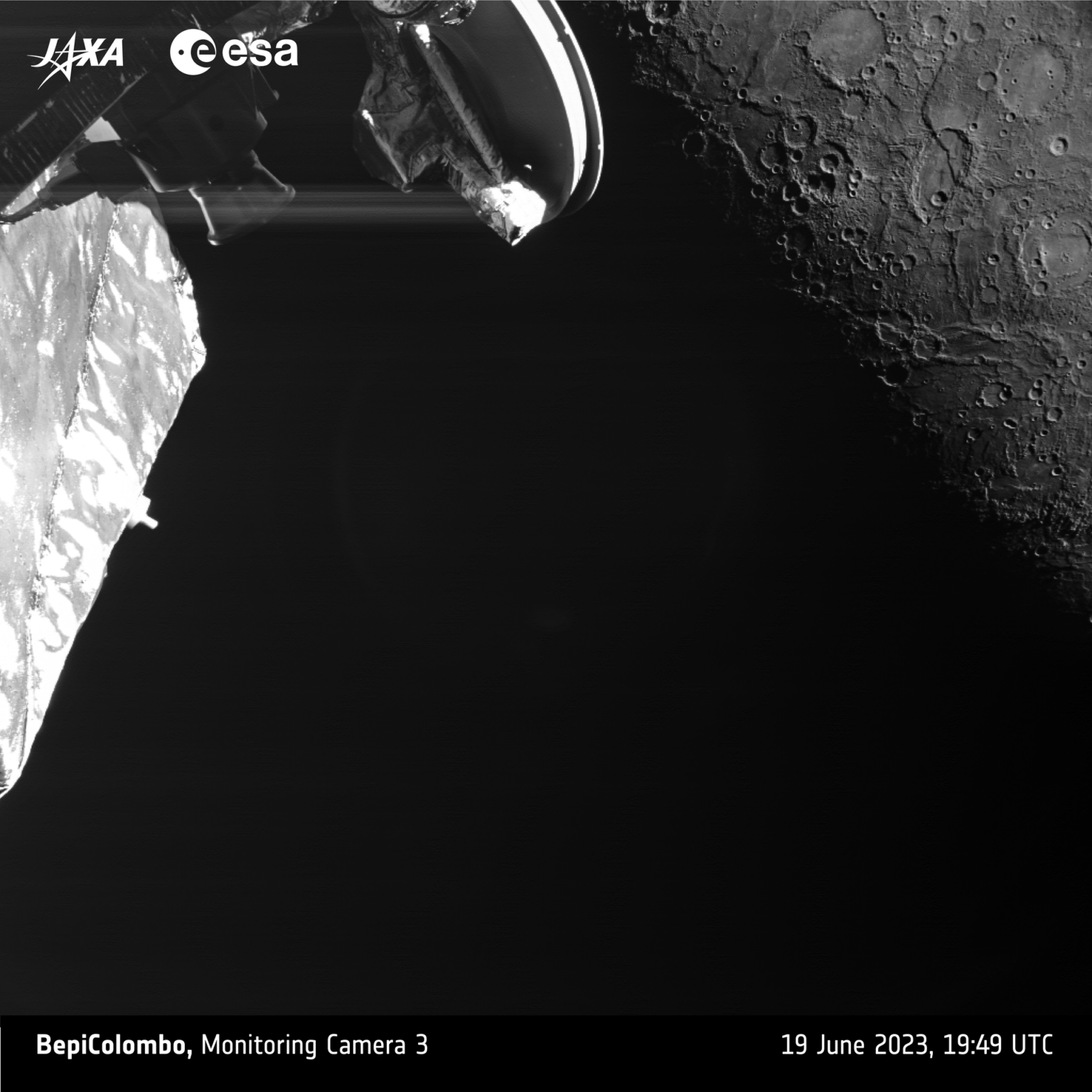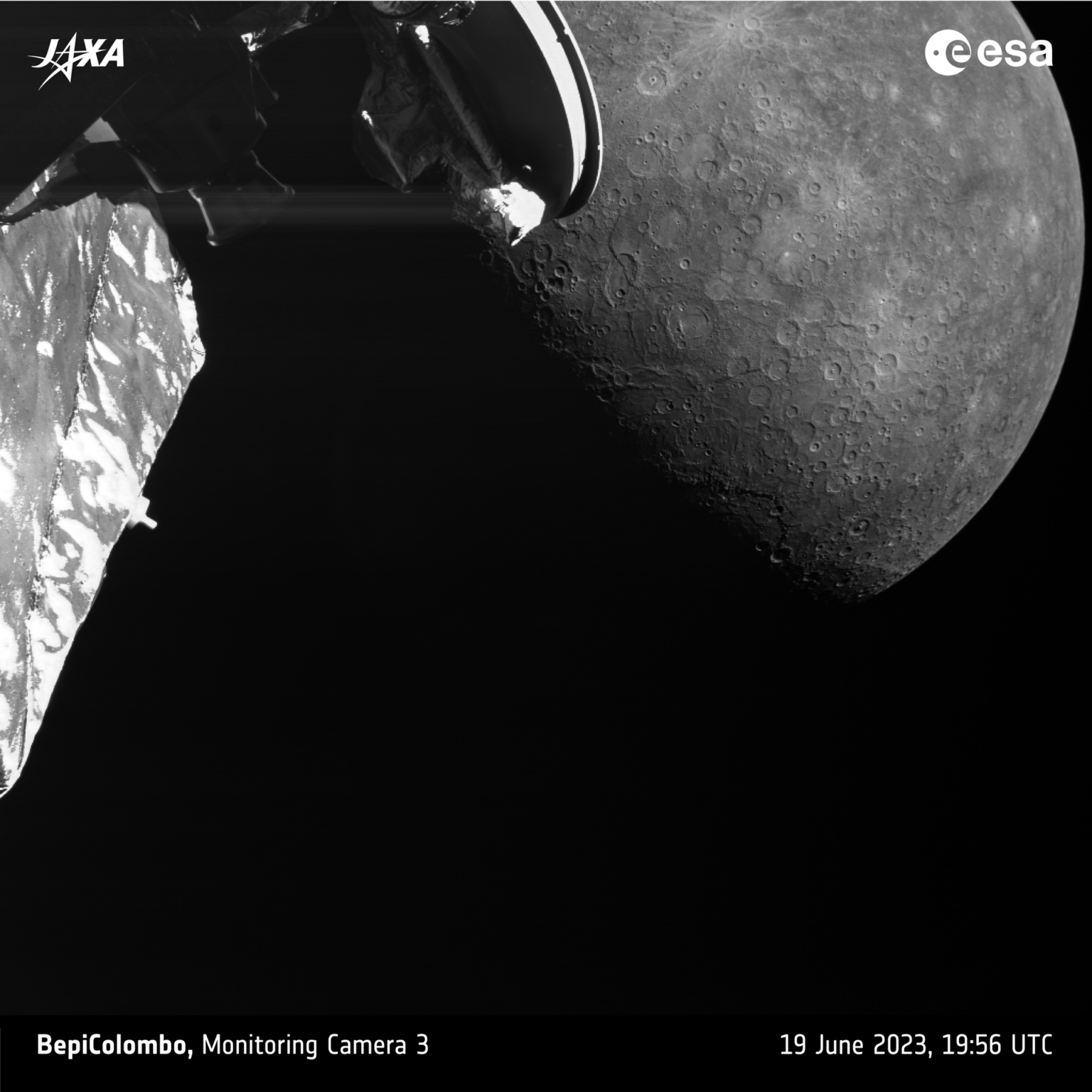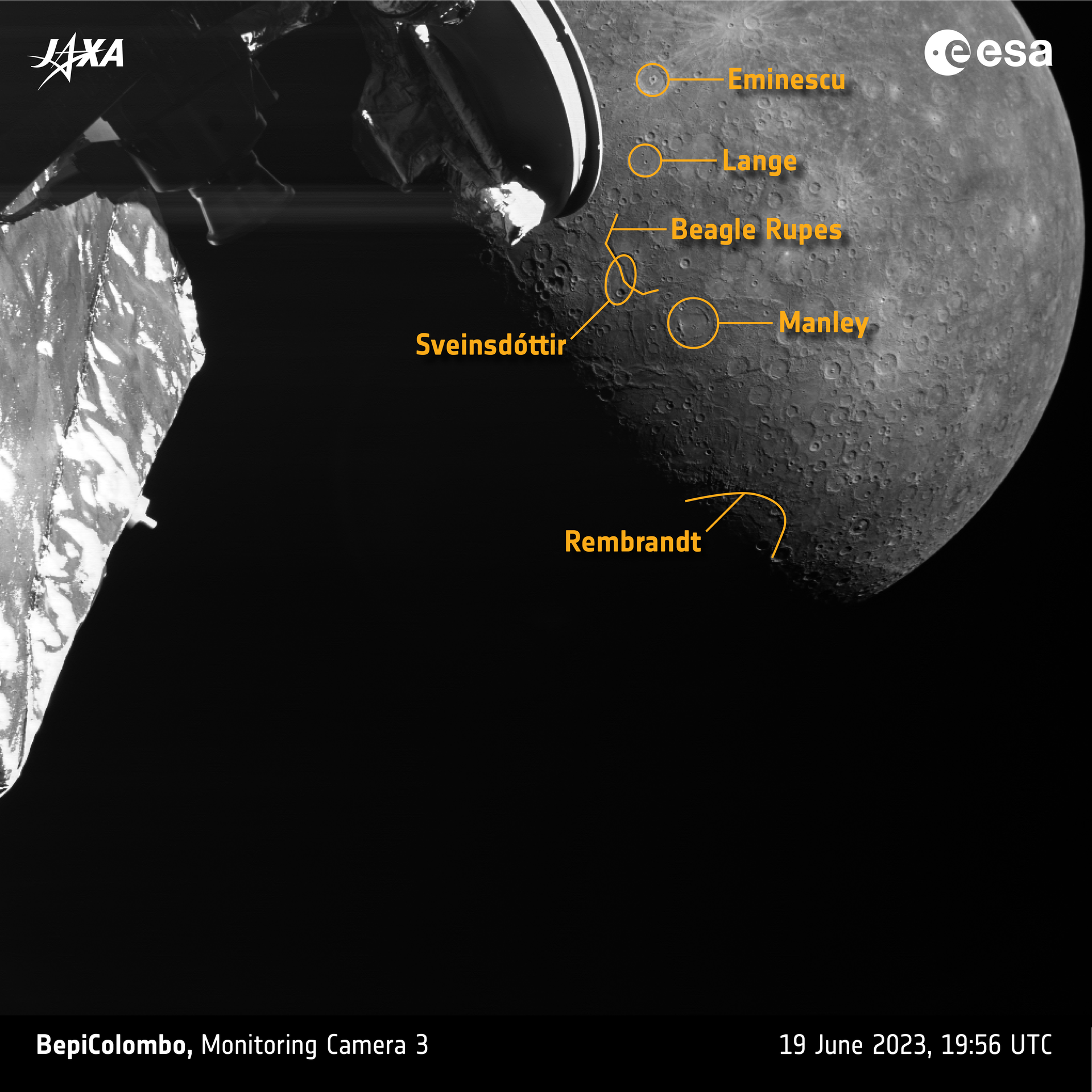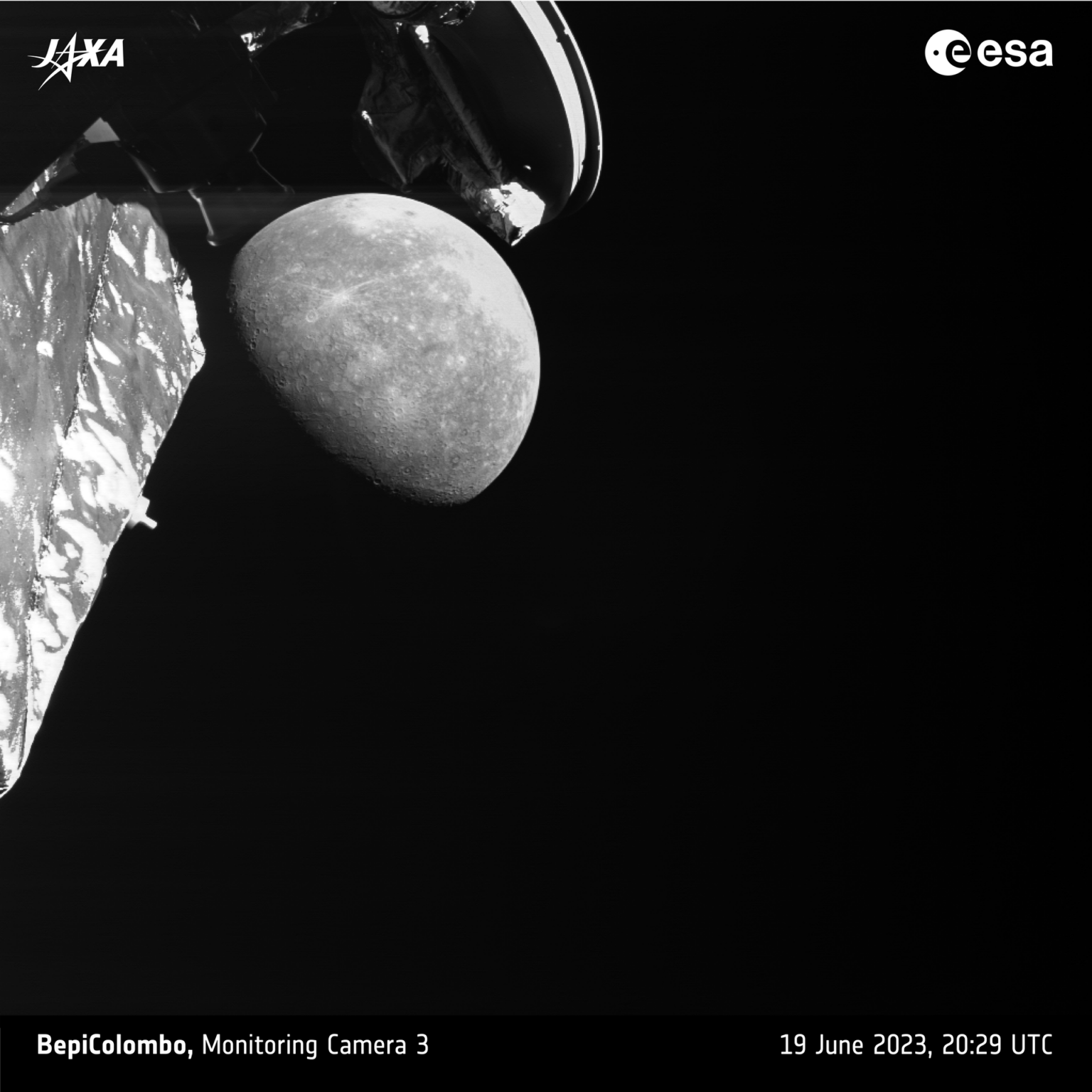The European Space Agency (ESA) has released several images taken by the BepiColombo spacecraft during its recent flyby of Mercury. The images showcase the craters covering the planet’s surface and a range of other geological formations.

The visit to Mercury took place on June 19. BepiColombo passed within 236 km of the planet’s surface. The spacecraft used the planet’s gravity to decrease its speed, which will eventually allow it to enter a stable orbit around Mercury.
BepiColombo consists of two probes (one built by ESA and the other by JAXA). Currently they are in a cruise configuration and docked together. Due to this configuration, they were unable to use some of their scientific instruments to study Mercury, including cameras. However, the experts still had the opportunity to capture images of the planet using a selfie camera attached to the BepiColombo’s structure, capable of taking black and white images with a resolution of 1024×1024 pixels.

One of the images was taken during the flyby from a distance of 1800 km. It reveals a variety of geological formations, with the 218-kilometer-wide Menli crater standing out. This crater recently received its name, honoring Jamaican artist Edna Manley. The impact formation is of significant scientific interest as it contains dark, low-reflectance material that may be remnants of Mercury’s early carbon-rich crust.
The second image was taken after the flyby when BepiColombo was at a distance of 4000 km from Mercury. The image displays a heavily cratered ancient surface with bright rays emanating from younger craters. It also shows scarps, which are distinctive features of Mercury’s surface. The scarps were formed due to compression accompanying the planet’s cooling, causing a 1% reduction in surface area.

The photo also reveals the 258-kilometer-wide Raditladi impact basin located between the high-gain antenna and the upper part of the image. This is a relatively young crater, and scientists continue to debate whether the smooth material at its bottom was formed from the impact-melted rock or during later volcanic eruptions.

The last image was taken from a distance of 11,780 km and provides an overall view of the entire planet.

The next close approach of BepiColombo to Mercury is scheduled for September 2024. The final insertion into orbit around the planet is planned for December 2025.
Source: https://www.esa.int
Начало формы
